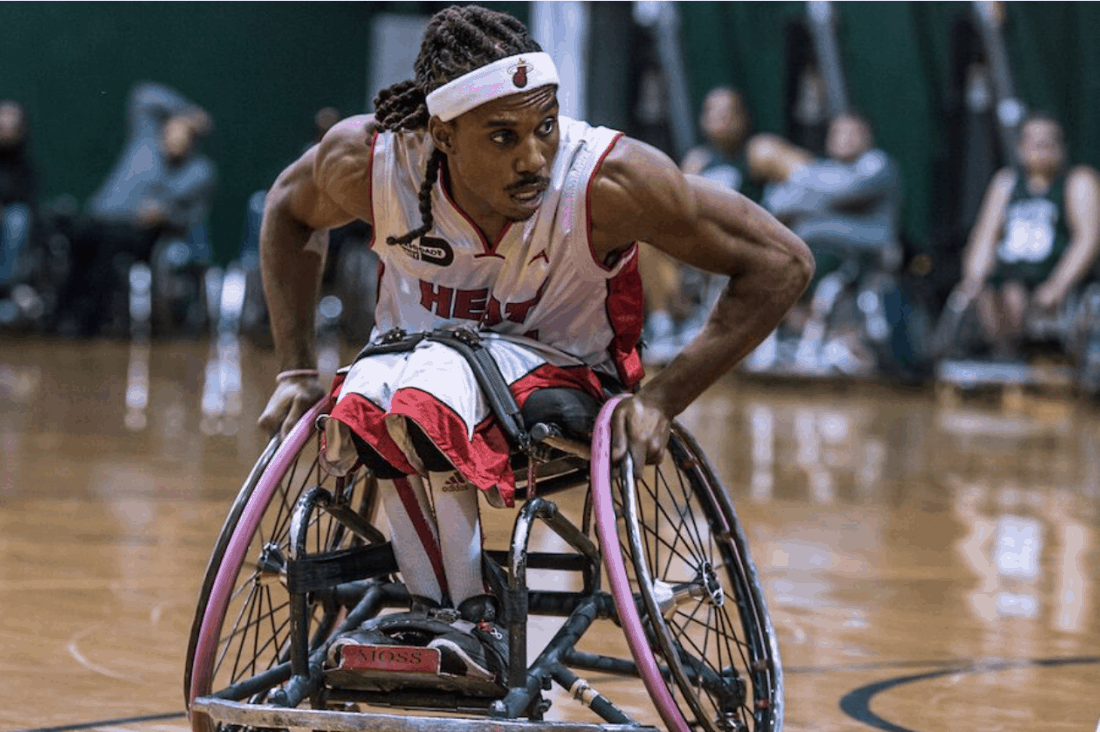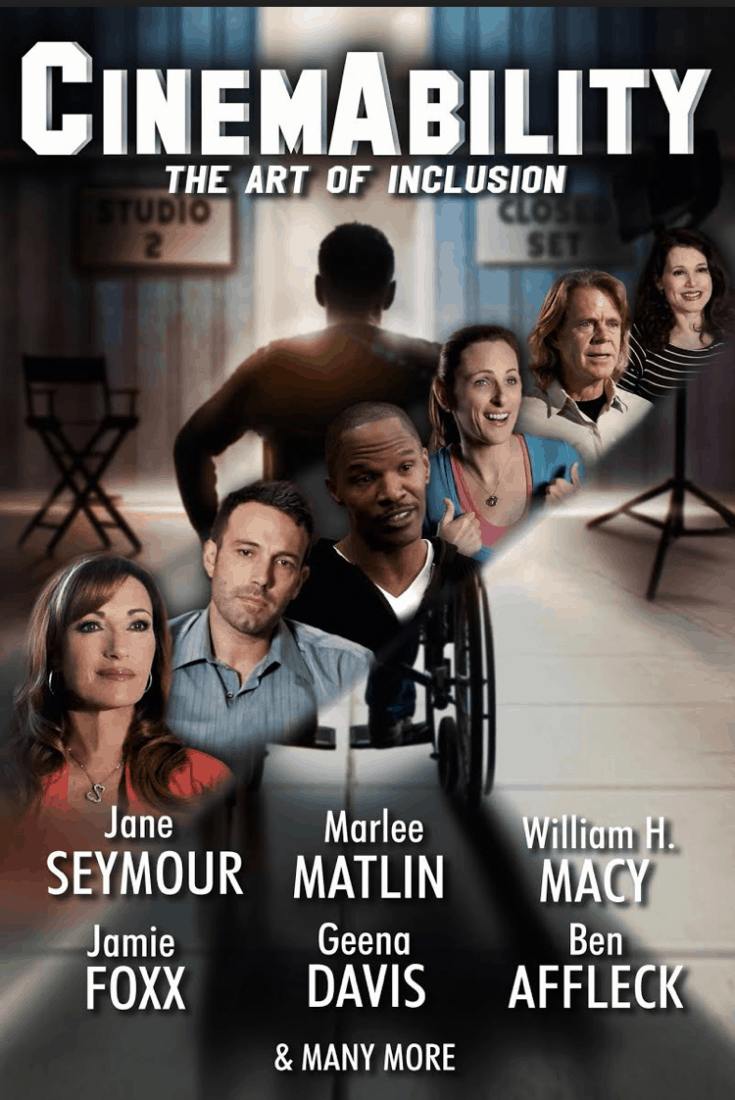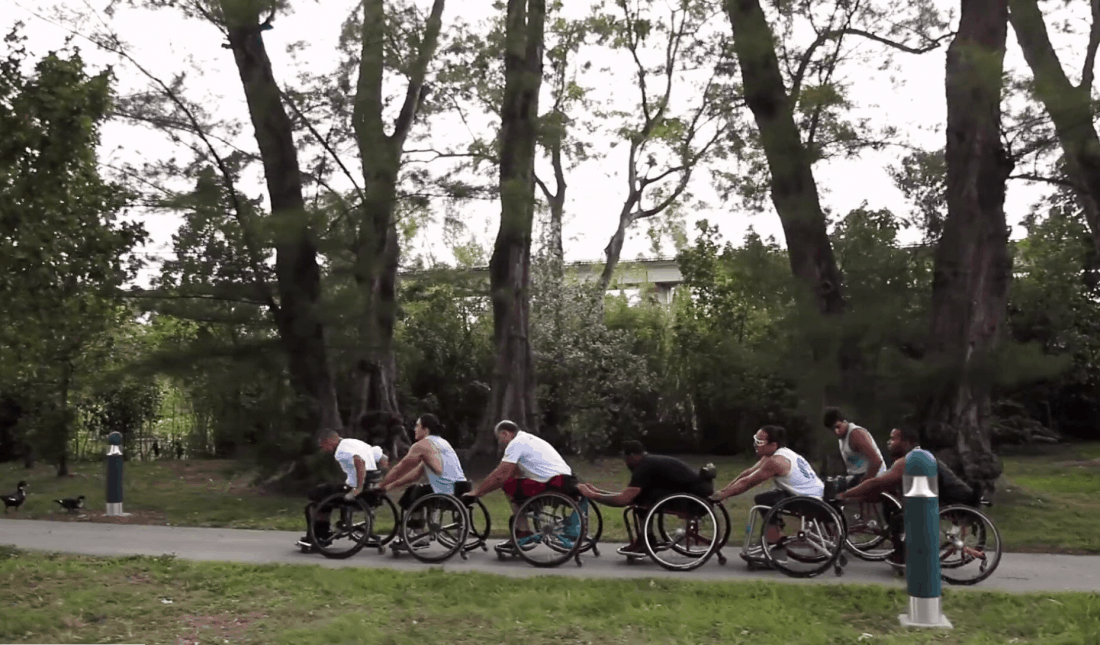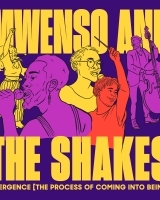International Disability Awareness Day

From the documentary The Rebound
In the spirit of International Disability Awareness Day (December 3, 2018), there are two documentaries that you should pay attention to. I could tell you to watch them because they both are about people with disabilities, but I’d rather discuss what makes them documentaries worth being made in the year of content overload. So much content floods the internet that I cannot stay current on all of the topics that interest me. Lately, I’ve had to make some difficult choices on what I will and won’t write about. There’s just too much out there. I think it would be disingenuous to suggest seeing a film based on topic alone. How about seeing two films that happen to be thematically apropos and a kick in the pants?
CinemAbility
Name your favorite disabled character in a movie. Can you? Too difficult? Try TV. Let’s go one step farther, name your favorite disabled actor in a film or television. Maybe I’m being unfair, you don’t have to have a favorite and let’s reframe disabled for a moment to differently abled, so we can be more inclusive. And here’s something that you are allowed to do, you are permitted to laugh. You know why? People with disabilities have senses of humor too and they are constantly laughing at themselves. Yeah, sometimes it is to make those of us who don’t appear different on the exterior feel comfortable but often because what they do is actually hilarious. Director Jenni Gold made the documentary, CinemAbility to explode the myth that people who have disabilities can’t be part of the film and television industry. When twenty percent of the population in the United States is disabled how is it that most film and television shows have few to no actors either playing disabled characters or disabled actors in meaningful roles or even in the background for that matter? Watch any film with a street scene shot in New York City and chances are everyone on the street will be walking at a brisk pace. You won’t see a single person in a wheelchair. I get passed by motorized wheelchairs in Manhattan on the regular.

The following includes excerpts from my conversation with Jenni Gold:
Jane Seymour Is Not Disabled but She’s the Narrator
Jenni Gold: There were a number of reasons why I wanted Jane. First of all, she’s amazing. She’s beautiful and has a wonderful way of telling a story that is very big. We know that we had to keep people’s interest from telling a story from the silent era to today. So, we wanted someone who would be engaging and beautiful to look at and she certainly qualifies there. She also had a relationship with Chris Reeve. People know about that, but they may not know that she also has other friends with disabilities; wheelchair users that she actually helped go to film school and has made the effort to make her house accessible, which I found to be remarkable, because most people don’t go to the lengths that she did. Her house—she put in special ramps, so you can get down to the pool and people could be included in a social way in her life. I think that speaks to her understanding of inclusion.
The Fox and the Mitte
CinemAbility is a love story to Hollywood with a caveat. Gold points out where Hollywood gets it right, where it doesn’t and where it comes close. My favorite disabled working disabled actor in the last ten years is a tie between Michael J. Fox and RJ Mitte. I grew up watching Fox on Family Ties, developed a minor crush on him in Back to the Future and last stopped following him in The Good Wife. Diagnosed with Parkinson’s disease nearly three decades ago, Fox has continued to act. Though I haven’t seen him in his recent series, Designated Survivor, I’ll admit that I found his reoccurring role of Louis Canning, on The Good Wife to be one of my favorites because I’m a sucker for physical comedy when it is done with finesse. Fox managed to bring a matter of factness combined with a catch me if you can attitude about his motor disability on the show that vexed the other characters and left me laughing alone in my room.
Telling It Like It Is
I feel like I’m doing the last civil rights movement, because even when Hollywood was Oscars So White and the MeToo movement, they would have discussions about diversity and inclusion, but guess what one group wasn’t mentioned? Disability. It’s the one minority group that everyone can join. It’s twenty percent of the population. What Hollywood doesn’t realize is that despite the fact of your film not being realistic and feeling quite right is that this segment of society has an annual disposable income that’s greater than the [coveted] tween market. When you see the movie, you’re going to have a good time. It also educates you on where we’ve been, where we’re going, and why maybe, but it should be something to talk about when you’re done watching. A lot of times you’re at a movie, you’ve been watching it, it’s like, “Yeah, you want to get a burger?” There’s nothing to discuss. In this one it opens up your mind and lets you expand your thinking. I know it’s crazy, but my goal is that the world will eventually see it, or at the very least every filmmaker or every storyteller that even wants to be in media anyway will have seen it because they’re the ones that perpetuate stereotypes unless it’s brought to their attention.
Myopia in Hollywood
William H. Macy said in the film that he didn’t even think about it sometimes [including disabled people in films]. He was thinking about all these important statements he would make when we did our interview and then he realized, wait a minute, I’m writing a script right now and I don’t have anyone in it. It wasn’t for a malicious reason, it just didn’t occur to him. Sometimes you just got to pull the shade back so people can see the problem. “We hide even when we have a sore shoulder or cold because if you have a disability that’s not visible, you fake it.” If you do have a cold like anyone could, you’ll hide back because you don’t want people to think of you in that way because it’s so ingrained because of what we’ve seen with the disabled person being the guy selling pencils on the corner that you wouldn’t be employed. I notice this a while back and when it dawned on me it was pretty startling.
My building in Hell’s Kitchen was built in 1870. Not a day goes by that I don’t see the elderly dude with crutches who only has use of one leg struggle to hobble up the circa 1870, grandfathered from modern building code, almost ladder steep stairs, to his fifth-floor walkup in my building. He politely declines help to carry his one bag of groceries that he buys daily. Marlee Matlin signs in the film, “we may sound different than you, we may speak different than you, but we are the same as you.” Amen sister.
The Rebound
The director of The Rebound, Shaina Koren Allen, didn’t know that there’s a wheelchair basketball team in her rural Virginia hometown outside of Charlottesville until she moved to Miami after college. This is where I make my plug for dogs as social lubricants: She and her partner, Mike met the coach of the Miami Heat Wheels at the dog park. Their dogs became friends, so they got to know each other and soon volunteered to make a promotional video for the team because at the time they were applying for grants. What she made is a film that follows the team over a couple of seasons as they are trying to get to the NWBA championships. These guys train like professional athletes without the salaries to support them. They wash cars, fundraise any way they can and use equipment that is falling apart. Allen makes us part of the action. We aren’t voyeurs, we are participants.
The following includes excerpts from my conversation with Shaina Koren Allen:
Exposure equals perspective shift
“When I went out and started following the team that’s when I started to see my own perspective shift. I think when we’re not exposed to disability when we’re growing up or were told not to look, not to be curious, we sort of suppressed those feelings and these things are in the back of our heads but we’re not able to really express it until we come in contact with a sport like wheelchair basketball. So, I found my perspective shifts. These guys became my best friends and it was so much fun to be able to capture their lives and see what it was like to live with a disability, but also to see that they could go through struggles just like the rest of us and their disability doesn’t define and it’s just another part of their life that they’re dealing with.”

Still from the documentary The Rebound
Orlando
“Everybody has a different story. Everyone has a different experience than I think when we’re able to share stories like this about somebody like Orlando who has created this opportunity for himself to go back to college and to get his master’s degree and is becoming an engineer. And he’s just a regular guy, just, he’s in a wheelchair and we, we tend to look at that first before we asked what somebodies name is. They’re like, oh, well what happened to you? But it’s not really about that. It’s about like seeing the humanity in people and being able to connect over our similarities over differences and obviously recognizing the disability because it’s something that they live with every single day. And like your family, I’m sure you want people to recognize that that is a part of your identity, but it doesn’t define you.”
Jeremy
The guy is unbelievably coordinated and he shouldn’t be. He was born with CP (and he’s a rap artist). Has always needed a wheelchair and he moves like a gymnast. It’s impossible to take your eyes off him for the same reason it’s impossible to take your eyes of off Michael Jordan. He’s just fun to watch and there’s nothing wrong with that. He doesn’t feel disabled, there are things he can do that I promise you we cannot do. To see this team train as if their lives depend on being the best basketball players, they can be makes me realize how important being part of a team is. They have to work together on and off the court to make it happen. You’re talking a regulation court with no modifications.
Allen: The chair is and extension of the body, it’s a piece of equipment that it also is something that, especially when you’ve been in a chair all your life, like Jeremy can move and be one with it. His somersaults and his rolls (you have to see it to believe it) are the really jarring to see when you see it for the first time. Like if you’re sitting in a basketball gym when he falls like that [out of his chair]and most people will be like, “oh,” you’ll hear everyone, like take a big inhale and then he’ll jump back up and everyone’s smiling and laughing. But it’s startling when you first see it. There’s the strength and the capabilities with these guys have to just pick themselves back up after they fall like that. A lot of them have it as long as they have that core strength. Jeremy has like an eight pack, so he’s able to throw himself back up and get back in the game. They inspire me and motivate me. I don’t work out quite as intensely as they do, but I know that if I needed to, I have someone to look at for motivation.
The Takeaway
As someone who can’t even find time to sleep, let alone exercise, my latest idea? No more holding on to the germ-infested subway bars. I’m working on my core strength. May the force be with me (and I don’t mean gravity). Oh, stop judging. I live in a walk-up and walk a minimum of sixty blocks a day.

